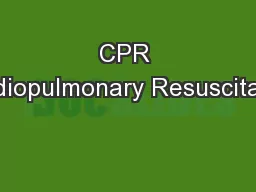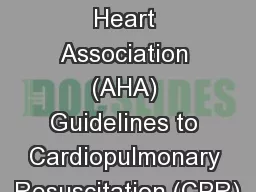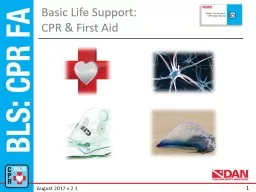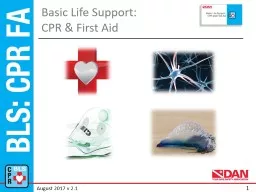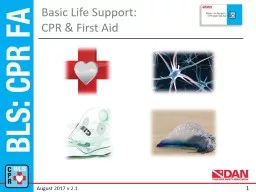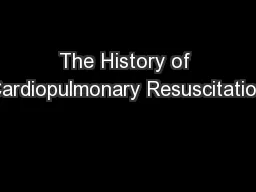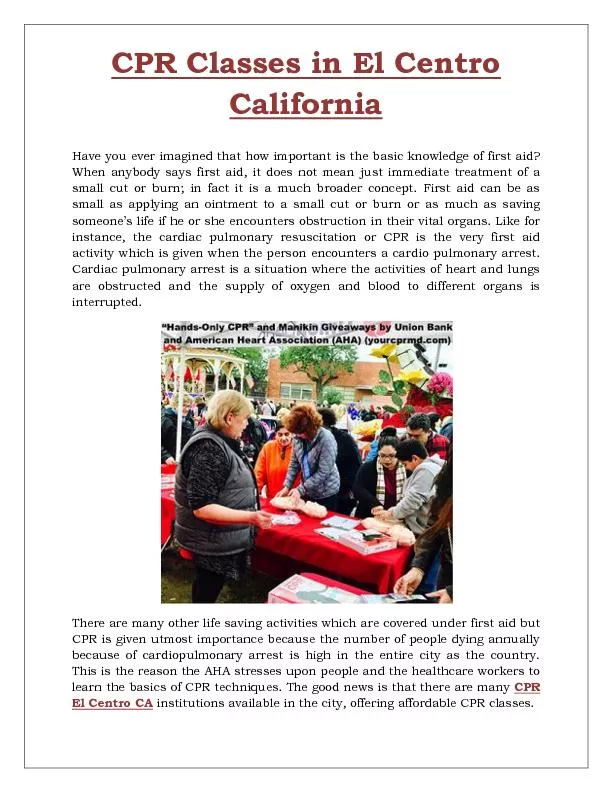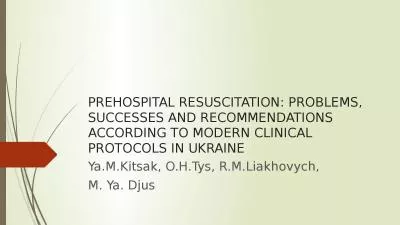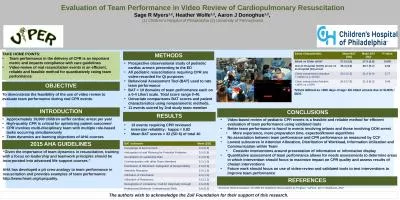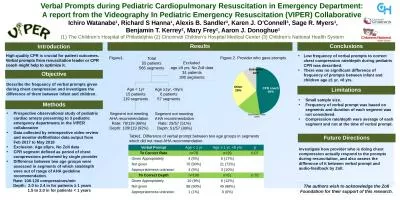PDF-Cardiopulmonary resuscitation CPR
Author : martin | Published Date : 2022-08-25
A leaflet for patients and families This lea31et is for patients their families and friends It explains What cardiorespiratory arrest is sometimes called 147cardiac
Presentation Embed Code
Download Presentation
Download Presentation The PPT/PDF document "Cardiopulmonary resuscitation CPR" is the property of its rightful owner. Permission is granted to download and print the materials on this website for personal, non-commercial use only, and to display it on your personal computer provided you do not modify the materials and that you retain all copyright notices contained in the materials. By downloading content from our website, you accept the terms of this agreement.
Cardiopulmonary resuscitation CPR: Transcript
Download Rules Of Document
"Cardiopulmonary resuscitation CPR"The content belongs to its owner. You may download and print it for personal use, without modification, and keep all copyright notices. By downloading, you agree to these terms.
Related Documents


